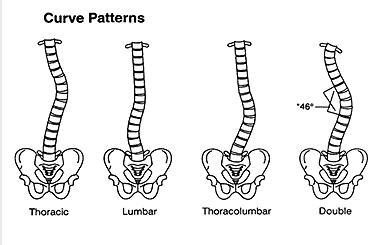
Standing Female Nude Seen from the Back by Vincent van Gogh
Since I wrote about the new study on using Side Plank pose (Vasishtansana) to improve scoliosis in my post Friday Q&A: How to Practice Side Plank Pose for Scoliosis, Nina has launched the Side Plank Pose Challenge, encouraging those with simple, one-sided scoliosis to join her in doing Side Plank pose every day, twice on the convex side of the curve (for example, if the scoliosis bows out to the right side, convex is to the right) and once on the concave side (left side, in this example). I’d remind folks that in the study just completed, the variation of the pose done on the convex side includes bowing the convex side of the body up towards the ceiling, away from the floor. Here is what I recommended last Friday:- First, do the convex side of Side Plank pose with the hip/side-body arch used in the study.
- Do the pose on other side, but without the lift, focusing on keeping the two sides of your chest as parallel as possible.
- Repeat the first side again, with the lift variation used in the study.
When you are doing the concave side, those side body muscles are already stronger and somewhat shortened compared with the convex side muscles. So we don’t want to encourage them to shorten any more with full concentric contraction as you did on the first side. I suggested above that you come into the more classic alignment of keeping the sides of your torso and waist parallel, which is really mimicking where you would like to see the spinal alignment end up over time. Going even further, I suppose one could argue that allowing the left side of the torso and waist to slightly bow toward the floor, then engaging the left side body muscles in isometric contraction to maintain that position might further the goal of gradually changing the curves of the scoliotic spine. I’d caution those that try this last idea out to make sure to keep the concave-side shoulder and shoulder blade areas strong and avoid sagging around the shoulder area.
If scoliosis—or life itself—were only so simple! As it turns out, some people with scoliosis will have a “double curve,” pictured as the variation on the far right of the illustration Nina shared last week (although the lower curve to the left is kind of subtle).

First off, since this condition has not been studied using Side Plank, anything I say about applying this particular pose to double curves is merely conjecture on my part. So keep that in mind! And it would be helpful for you to be evaluated or re-evaluated by your doctor or health care provider to document where your curvature is at the start of any experimentation you might undertake (even those of you joining Nina for her Side Plank Pose Challenge!). (When her chiropractor reviewed her old X-rays this week, Nina learned that what she thought was a right-sided curve was actually a low lumbar, left-sided curve!) And then you could return to have the angle of curve rechecked after some reasonable amount of time practicing Side Plank Pose.
Here are two possible ways to address the double curve:
- Since the secondary, lower curve may be compensatory, focusing on the primary, larger curve could positively affect both curves, bringing the double curve closer to vertical alignment. So you might just do what those with single curve to one side are doing.
- It could also be argued that when doing the Side Plank Pose on the convex side of the primary upper curve, you would accentuate the lift in the mid-ribcage area, and when doing it on the convex side of the lower curve, you would bow at the side-waist area.
One of our readers and a student of mine, a graduate of the Piedmont Yoga Teacher Training, went so far as to email the author of the scoliosis study, Dr. Fishman, and received quite helpful information back. He acknowledged to her that double curves are more complicated to apply the Side Plank pose prescription to. And he actually offered to send her a yoga Rx if she ever has another spinal X-ray done and can send it to him. Wonderfully generous!
If those of you out there with a double curve decide to give this pose a try to see if it improves the curve of your scoliosis, please report your findings back to us—who knows, you might end up planting the seed for a new study on yoga for scoliosis!
Subscribe to Yoga for Healthy Aging by Email ° Follow Yoga for Healthy Aging on Facebook ° Join this site with Google Friend Connect

